The flagship restaurant of Le Crillon hotel is one star Michelin L’Ecrin, which is tucked away in a room just off the main tea room of the hotel. The dining room is small, with just eight tables laid for dinner on the evening that I ate there. The head chef is Boris Campanella, who moved here from Cheval Blanc in Courcheval, where he had worked for five years under Yannick Alleno. The menu concept is unusual in that you choose a bottle of wine and the kitchen then prepares a menu that they think will suit the chosen wine or wines. You can choose a number of courses, from three up to eight, which vary in price from €175 for five courses to €235 for seven courses, or instead order three course a la carte at €195. There was also an eight course €755 menu that includes five glasses of prestige wine, including high end labels such as Clos St Hune and Mouton Rothschild.
The wine cellar is huge, with almost three thousand different wines available, with the operation overseen by head sommelier Xavier Thuizat. You can even eat in a private room “La Cave” directly in the wine cellar. I chose a bottle of von Kesselatat Riesling Reichsgraf Scharzhofberger Kabinett 2006, which was rich, aromatic and gorgeous and just €85 compared to its retail price of €23. This wine, incidentally, is ridiculously good for its price. Further examples from the list were Laurence Combier Clos des Grives Crozes Hermitage 2014 at €115 for a wine that you can find in a shop for €66 and Yves Cuilleron Condrieu La Petit Cote at €135 compared to its retail price of €50. In the higher echelons of the list you could find Guigal La Landonne 1995 at €855 compared to its retail price of €660, and Vega Sicilia Unico 1990 at €1,300 for a wine whose current market value is €601.
Champagne is served in a rather peculiar glass with no base that rests almost horizontally on the table. Supposedly this was an idea of Marie Antoinette, who wanted a glass that guests would have to finish their wine and not be able to put down until empty. In fact this version has a flat inset on one side so that it can be rested on the table, though there is no conventional base to the glass. Quite why this is regarded as a good idea eludes me, and I am not sure whether there is any more truth to the design legend that the now debunked theory that the classical champagne coupe was modelled on Marie Antoinette’s left breast. In fact the first champagne coupe appeared in England in 1663, considerably predating Ms Antoinette, who lived from 1755 until her execution in 1793.
The meal began with a trio of vegetable-based canapés. Cauliflower with Espelette pepper from The Pyrenees was topped with candied lemon, the latter providing an acidic contrast to the earth cauliflower. Celeriac came garnished with marjoram and hazelnut praline, the hazelnut also providing a nice flavour contrast to the celery. Finally, there was a buckwheat tartlet tipped with artichoke, Parmesan cheese and a little lemon, the main flavour being the artichoke, the pastry being delicate. These were an unusual and enjoyable set of canapés (16/20). Bread was made from scratch in the kitchen, a country bread with excellent crust and good texture, though for me it needed more salt.
The first of my five courses was roasted frog with sweet garlic and a crisp of rye bread, along with jus of frog and a separate watercress sauce with garlic, along with a garnish of fresh watercress. Frog has a mild flavour, perhaps reminiscent of something between chicken and fish, so most of the heavy lifting on flavour was done by the sauces. These were both excellent, the watercress sauce in particular having quite deep flavour (15/20). The next dish was fillet of John Dory from Erquy in Brittany, served with dill, black radish and caviar from the supplier Kaviari in Paris. The fish was carefully cooked and came with a lovely, buttery traditional sabayon sauce, the caviar adding an air of luxury to the dish (16/20).
This was followed by broth of artichoke with caraway, the soup bowl covered with a crust of puff pastry that you cut into when served to release the fragrance of the soup. On top of this the chef grated slivers of early season white truffle from Alba. This particular truffle had left the ground seven days earlier and still had plenty of its distinctive fragrance (the contrast between this and an utterly fragrant free white truffle at Gordon Ramsay a few days earlier was striking). The pastry was very delicate, the consommé light and clear but the artichoke itself had somewhat limited flavour. There was also a lack of seasoning, and I think the dish would have been improved by the addition of more salt 15/20).
Calf sweetbread was served as two generous slices on a buckwheat base with excellent black trumpet mushrooms and pan-seared little pieces of crispy sweetbread with a sorrel sauce and veal jus. The sweetbreads were classy and the sorrel sauce had very deep flavour, nicely balancing the richness of the sweetbread. The earthiness of the mushrooms and the mix of textures made this into a lovely, albeit quite rich, dish (17/20).
A cheese course comprised a choice of Gruyere and Gorgonzola, both in excellent condition. This came with warm bread flavoured with pistachios and dried fruit. Dessert was a pretty arrangement of chocolate served on an oat biscuit with ice cream of cocoa nibs and chocolate flavoured with black cardamom, topped with chocolate foam. This had lovely flavour and a pleasing mix of textures (easily 17/20). A further dessert was cream lemon and orange flavoured with cinnamon, alongside a sorbet of oolong tea. This was refreshing and had silky texture (16/20). A selection of coffee from Difference Coffee in London was available, including Panama Gesha and Jamaican Blue Mountain. A trio of thin petit four crisps comprised one of polenta corn, one of almond and a particularly good one of both dark and white chocolate.
Service was dazzlingly good, the dishes arriving at a steady pace, the wine topping up faultless, the waiters very knowledgeable about the ingredients and the techniques used. The bill came to €321 (£275) for one person, with the Riesling, a glass of Jacquesson Degorgement 736 Tardif Extra Brut champagne and a glass of dessert wine. If you shared a bottle of modest wine then a typical cost per person here might be more like €230 (£197). This was an excellent meal, with inventive dishes that showed high class kitchen technique, the experience enhanced by world class service.

















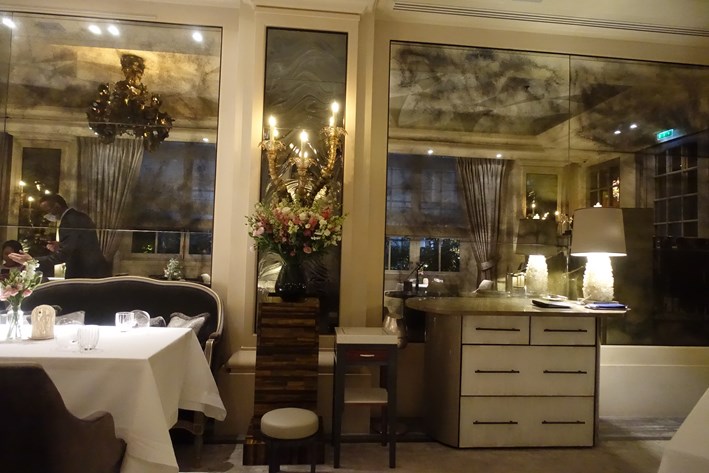

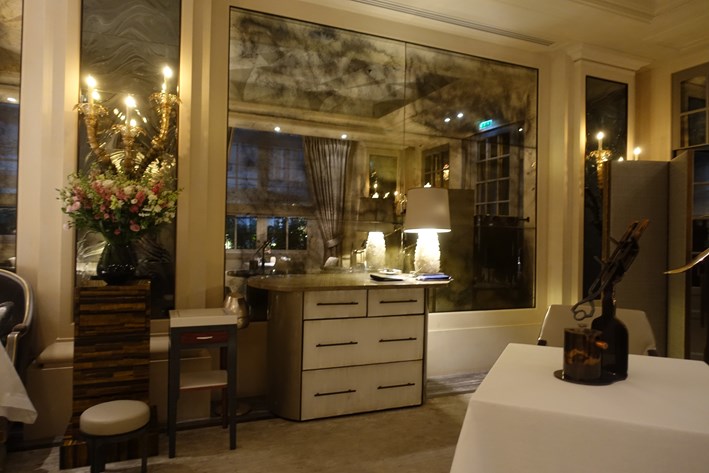

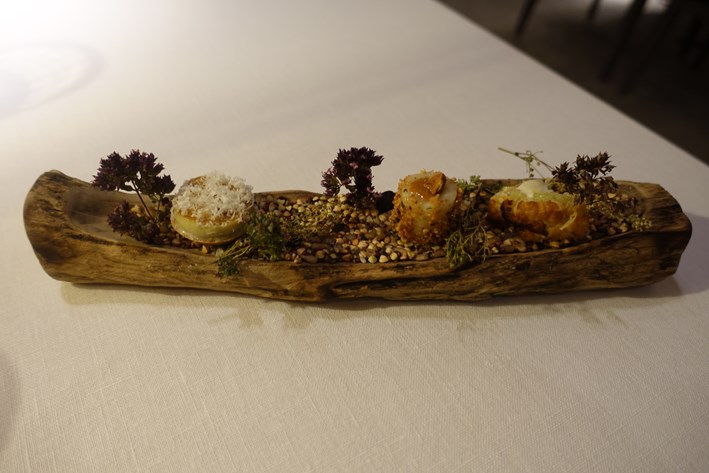

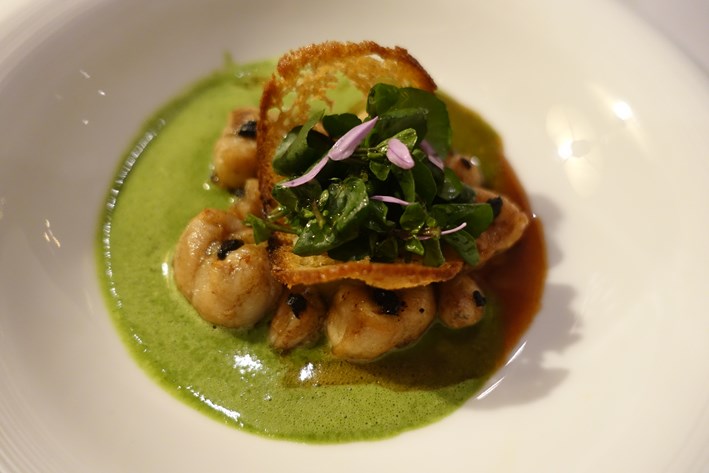
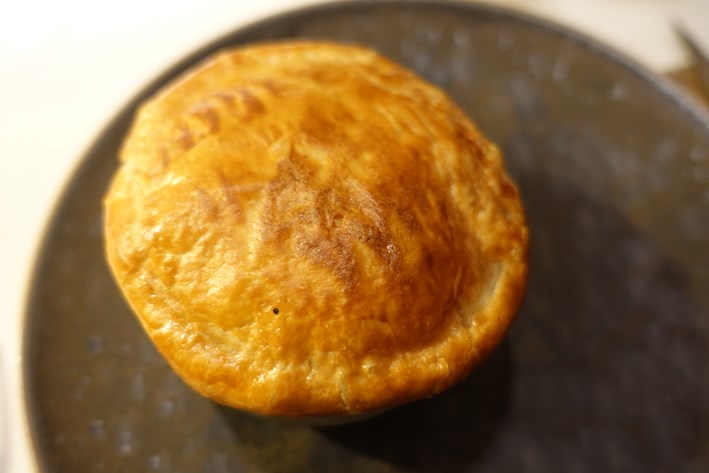
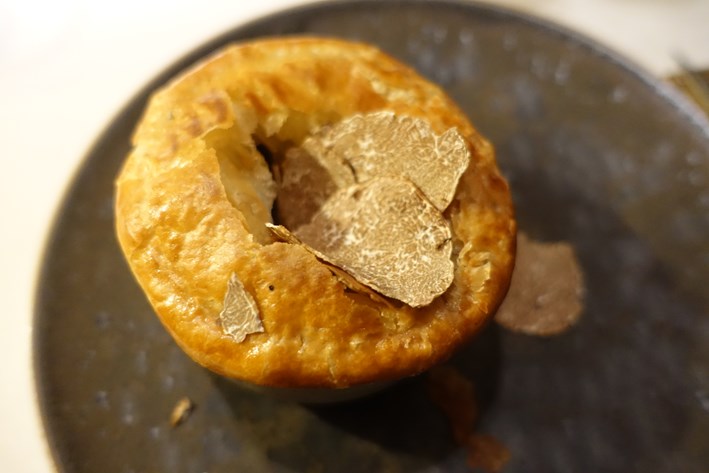

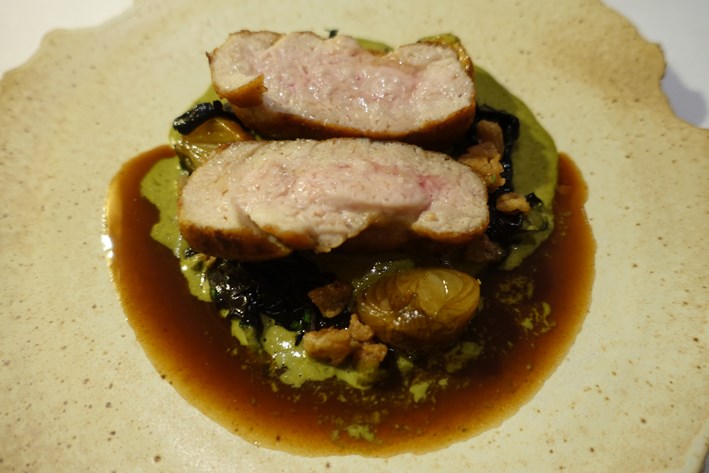


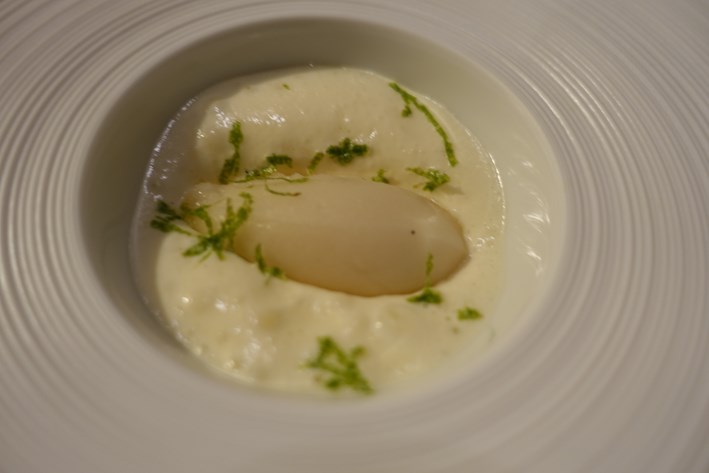
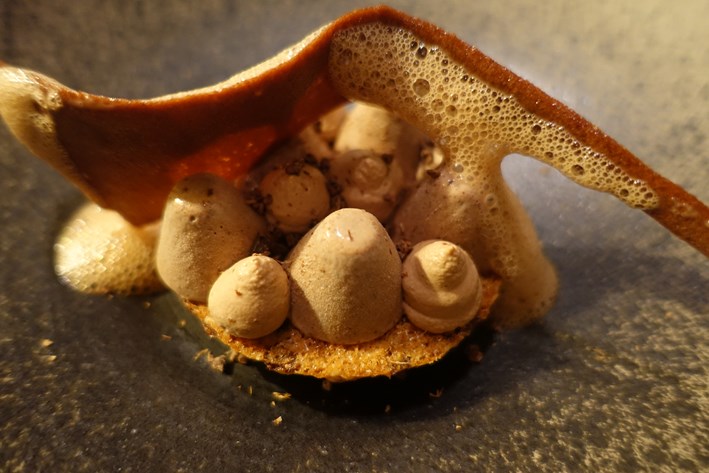


Add a comment
Thank you for submitting your comment, this will be checked and added to the website very soon.
User comments